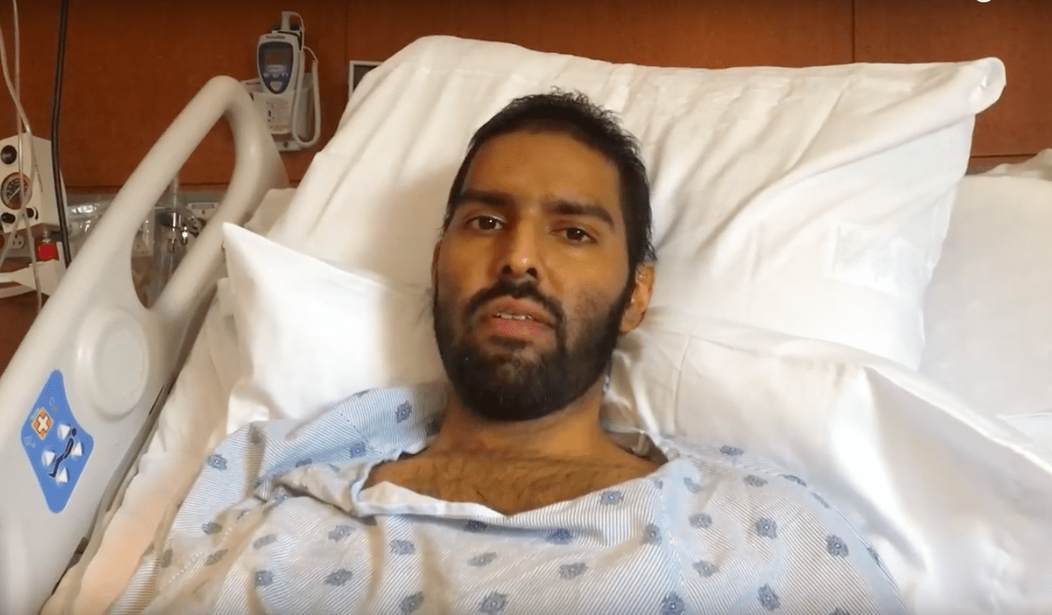Abdulrahman Sameer Noorah, a Saudi national who was in the U.S. on a student visa attending Portland Community College, was under house arrest in June 2017 after being charged in the hit-and-run death of 15-year-old high school sophomore Fallon Smart. But just nine days prior to his trial and despite wearing a U.S. Marshals Service GPS ankle monitor, Noorah vanished.
Saudi authorities now admit that Noorah is back home, having arrived a week after his disappearance from Portland.
Local news outlets are reporting that the Saudi consulate may have aided in his escape by providing transportation and a false passport.
Fallon was killed in August 2016 while crossing the street at a crosswalk when Noorah drove around cars ahead of him that were stopped to let the girl cross. He was driving 55 to 60 mph in a 25 mph zone when he struck her with his gold Lexus and then drove off. Her head hit and cracked the windshield.
He later returned to the scene and was arrested. He was charged with manslaughter, reckless driving, failing to perform the duties of a driver (hit-and-run), and recklessly endangering another person.
At the time of his arrest, Noorah was driving on a suspended license for 17 parking violations and one previous charge of driving on a suspended license for not having insurance.
Considering him a flight risk, the judge in the case increased his bail from $280,000 to $1 million.
The Saudi consulate paid the $100,000 to meet the ten percent requirement for bail, and he was released on September 6, 2016.
As part of his bail conditions, Noorah had to turn over his passport to the Department of Homeland Security.
His attorneys, paid for by the Kingdom of Saudi Arabia, told the court that Noorah had strong ties to the U.S. and was not a flight risk.
According to The Oregonian, Noorah had received permission to study for final exams on June 10, 2017, at the college’s campus.
Instead, Noorah was picked up by a black GMC Yukon XL. The vehicle then traveled to a local sand and gravel business, where his GPS ankle bracelet was cut off and later found by authorities.
By June 17, Noorah was back in Saudi Arabia.
How was Noorah able to make it back home without his passport? The prosecutor in the case believes he had assistance from the Saudi government.
Shawn Overstreet, the Portland prosecutor trying the case, told the Washington Post that the Saudi consulate may have provided a fake passport under a different name to allow Noorah to leave the country. He may have left on a private flight, where tracking of passengers is less regulated.
But leaving in such a manner, or any manner, would have required considerable resources — money that Noorah didn’t have.
It was only earlier this year that the Saudis told Homeland Security investigators that Noorah was back home, but they provided no information on his location. And now they won’t answer any other questions about Noorah’s escape.
Overstreet notes that the Saudi government won’t be on the hook for the other $900,000 of Noorah’s bail. Instead of paying the bail themselves, it was deposited into his attorney’s client account, meaning that Noorah, and not the Saudi consulate, is responsible in the event of any bail forfeiture.
Since the U.S. and Saudi Arabia have no extradition treaty, it’s very unlikely that Noorah will be returned to face justice.
The Oregonian notes that this case is similar to another in Oregon in 2012.
Ali Hussain Alhamoud, another Saudi national, was arrested on multiple sex crime charges including first-degree rape. His bail was also posted by the Saudi consulate. That same day, Alhamoud boarded a flight at Portland’s airport and left the country. According to Interpol, he is still wanted.
Monsour Alshammari, another man related to Saudi royalty and with connections to the Saudi government, was arrested for rape in Utah. Again, the Saudis provided $100,000 for his bail and he was released on March 31, 2015.
A few weeks later, Alshammari was arrested trying to cross the border into Tijuana, Mexico.
Noorah, Alhamoud, and Alshammari were all in the U.S. on student visas.
Currently, there are nearly 60,000 Saudi students in the U.S. here on visas. Only 8,271 are privately sponsored, with the rest being supported and their education paid for by the Saudi government.
The 58,726 Saudi students presently the in the U.S. is down from the 66,000 who were here during the 2012-2013 school year.
By contrast, there were only 5,579 Saudi students at American higher education institutions in the 2001-2002 school year when the 9/11 terror attacks occurred. One of the 9/11 hijackers who was here on a student visa, Hani Hanjour, flew American Airlines Flight 77 into the Pentagon.
Because of stricter regulations after 9/11, there were only about 1,000 Saudi students in the U.S. in 2004.
Earlier this month I reported here at PJ Media on the case of Naif Alfallaj, who was arrested earlier this year in Oklahoma after it was discovered that he had previously been at an al-Qaeda training camp in Afghanistan. Alfallaj, who has been living the in the U.S. since 2011, is here because his spouse has a non-immigrant F-1 student visa allowing her to study here.
Alfallaj completed flight training at a school in Oklahoma in 2017.









Join the conversation as a VIP Member